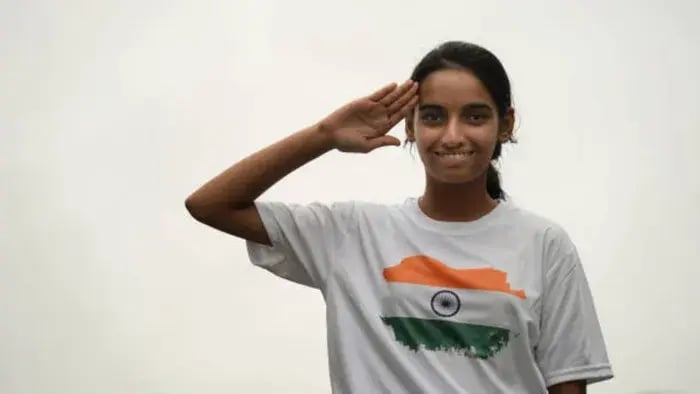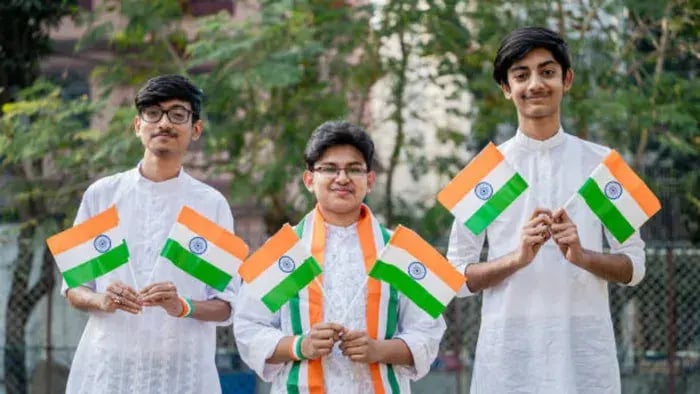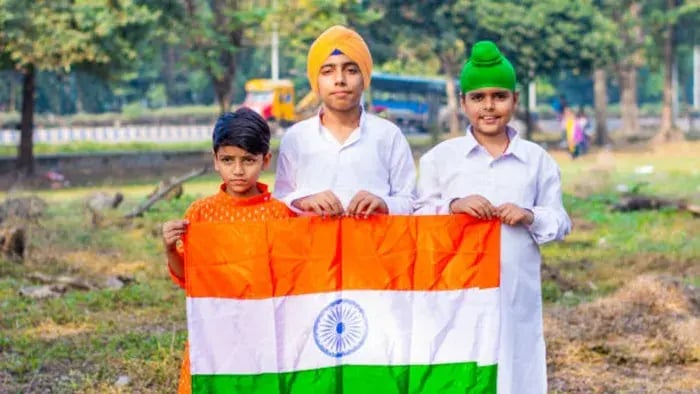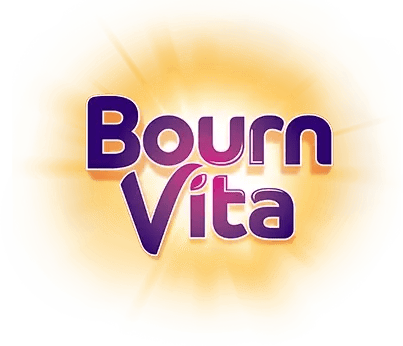- Flag Hoisting and National Anthem
- Cultural Performances
- Fancy Dress Competitions
- Classroom Decorations and Poster Making
- Patriotic Speeches and Poems
- Quiz Competitions and Role Plays
- Community and Tree-Planting Activities
Introduction

In schools across India, Independence Day is a riot of color, energy, and national pride. Classrooms are decorated with handmade flags, corridors are filled with patriotic songs, and children are dressed as national heroes. It’s an opportunity for students to introspect about the strength and spirit of the country they belong to. Every performance, speech, or activity is a way to understand what freedom means, especially for a generation that hears stories of the past but lives in the present.
The celebrations start early with the hoisting of the national flag and the singing of the anthem. From there, the day flows into cultural events, dances, storytelling sessions, and art competitions that showcase India’s diverse and rich heritage. Teachers, students, and parents come together to create a space where history meets creativity and where every child gets a role, big or small, to play.
A Guide To Celebrations: Independence Day In School

Independence Day is one of the most meaningful celebrations in Indian schools. Beyond the parade of flags and patriotic songs, it creates a stage for children to feel connected to their roots and proud of their identity. Every student gets a chance to contribute—be it through art, speech, music, or costume. The joy and energy that fill the classrooms and playgrounds on 15th August are reminders that lessons of freedom and responsibility don’t always come from textbooks. They also come from shared experiences that make history feel real and relevant.
Flag Hoisting and National Anthem
The day often starts with a ceremonial flag hoisting led by the school principal or a guest. Students and teachers stand in attention, singing the national anthem with pride. This moment sets the tone for the rest of the day, anchoring everyone in a sense of unity and national respect.
Cultural Performances
Children take the stage with patriotic songs, folk dances, and short skits based on India’s freedom struggle. These performances help students learn about heroes like Rani Lakshmibai, Bhagat Singh, or Dr. B.R. Ambedkar through creative expression, teamwork, and stage confidence.
Fancy Dress Competitions
Students dress as freedom fighters like Subhas Chandra Bose, Sarojini Naidu, or Sardar Patel. These moments often spark curiosity—kids begin asking questions about the roles they play, which turns into a meaningful history lesson wrapped in fun.
Classroom Decorations and Poster Making
Children work in teams to decorate their classrooms with tricolor artwork, quotes from freedom fighters, and hand-drawn posters. It encourages research, creativity, and teamwork while helping them understand the deeper meaning of freedom.
Patriotic Speeches and Poems
Students prepare short speeches and poems in English or their native language, sharing their thoughts on freedom, unity, or the responsibilities of youth in shaping the nation. This builds public speaking skills and a deeper emotional connection to national values.
Quiz Competitions and Role Plays
Schools often organise quizzes based on India’s independence movement, its leaders, and the Constitution. Some also encourage kids to role-play as leaders, bringing historical figures into the spotlight in engaging ways.
Community and Tree-Planting Activities
Many schools use this occasion to involve students in social tasks like cleanliness drives, tree plantation, or helping staff decorate the campus. These small acts show kids how responsibility and kindness are also a part of patriotism.
Conclusion

Independence Day in schools is about building the future. Every event, from singing the anthem to planting a sapling, shapes young minds to value freedom, peace, and unity. These memories stay for years and help children grow into thoughtful, informed citizens who know that celebrating India means participating in its progress.
Her love for storytelling began with reading her grandfather’s speeches, where Tarishi saw the power of words in creating lasting memories. Combining her passions for food and writing, she has turned her life into a fulfilling path of sharing stories that celebrate flavours and how food brings communities together.
The views expressed are that of the expert alone.
The information provided in this content is for informational purposes only and should not be considered a substitute for professional medical advice, diagnosis, or treatment. Always seek the advice of your physician or another qualified healthcare provider before making any significant changes to your diet, exercise, or medication routines.
















